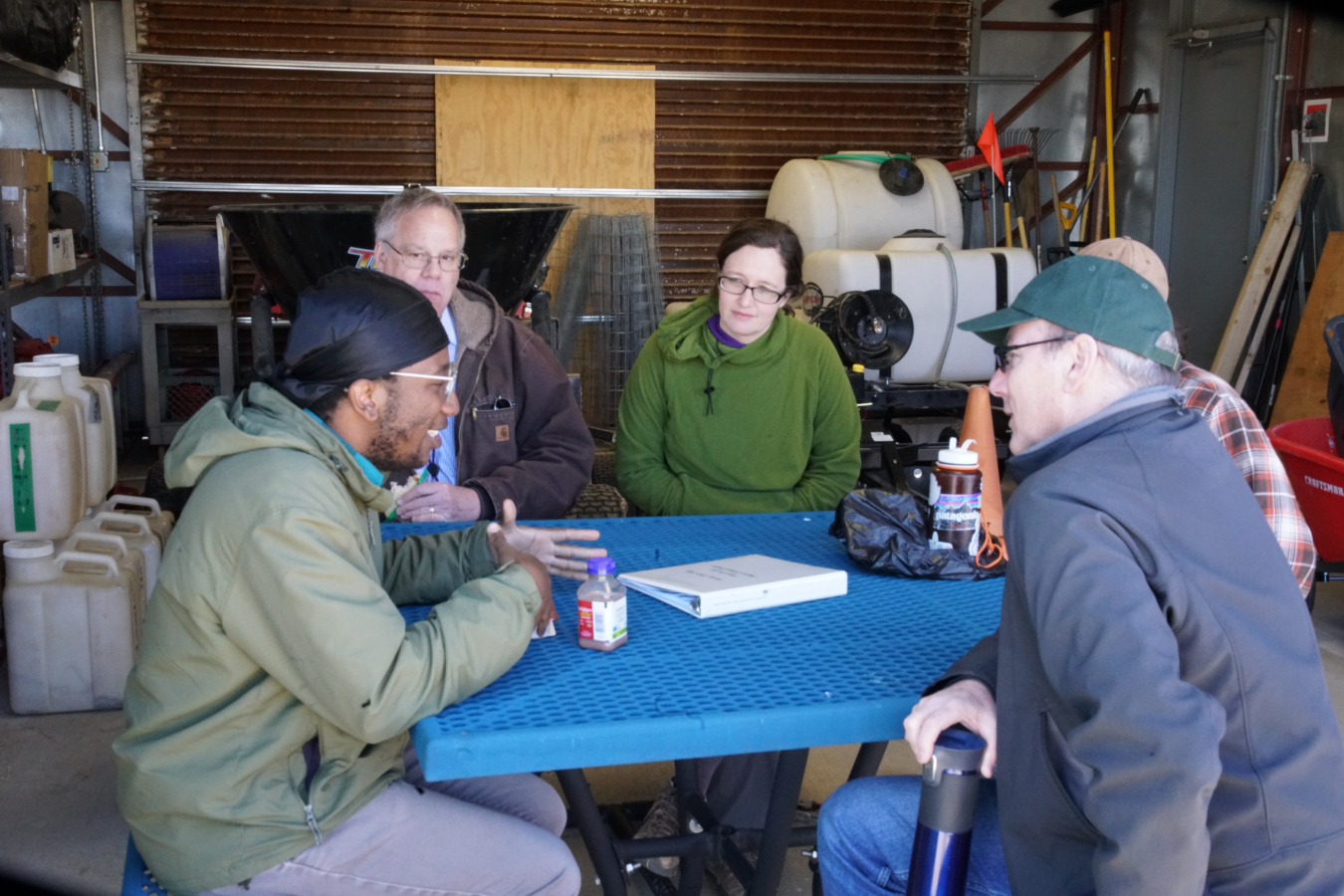Program provides opportunity to engage with young adults about environmental career paths
May 5, 2023
In March, Mile High Youth Corps Energy and Water Conservation Program members toured the Rocky Flats Site near Denver for the second year in a row.
"Our new crew of Energy and Water Conservation corpsmembers were thrilled for the site visit to Rocky Flats this year,” said Samantha Mooney, education and outreach coordinator for the Mile High Youth Corps Energy and Water Conservation Program. “They love the chance to switch up their typical Monday to Thursday schedule of retrofits in the community; especially when it allows them to get outside into nature and learn a bit of local environmental history!"
Mile High Youth Corps is a nonprofit organization established in 1992 to give young adults ages 17 to 24 a chance to earn an income and learn hands-on job skills while serving their communities. The Energy and Water Conservation Program engages corpsmembers in providing water and energy efficiency measures to income-qualifying households and nonprofit facilities. During the course of three months to two years, corpsmembers gain customer service skills and technical training for “green” industry careers.
Corpsmembers gained valuable career insights while talking with staff from the U.S. Department of Energy Office of Legacy Management (LM), Colorado Department of Public Health and Environment (CDPHE), U.S. Environmental Protection Agency (EPA), and U.S. Fish and Wildlife Service (USFWS).
“This was a great, collaborative opportunity to show individuals from the Mile High Youth Corps the extent and complexity of activities associated with the Rocky Flats Site and the Rocky Flats National Wildlife Refuge,” said LM Rocky Flats Site Manager Andy Keim. “It provided a chance to showcase the solar-powered treatment systems, the monitoring network, and the wildlife at Rocky Flats and to engage with young adults about our jobs and environmental career paths.”
During lunch at the site, Keim talked with youth corpsmembers about his diverse career. Keim has worked at LM for six years and is a geologist who specializes in hydrogeology. His early-career experiences included navigating wildlife and weather conditions in the Louisiana bayous near Baton Rouge to conduct sampling for ecological and human health risk assessments.

David Connolly, EPA environmental remediation project manager; Lindsay Murl, CDPHE environmental protection specialist; and David Lucas, project leader and refuge manager for USFWS Colorado Front Range National Wildlife Refuge Complex, also spoke with program members. Lucas encouraged the members to explore what they enjoy and to be flexible early in their careers.
LM Support contractors George Squibb, principal environmental engineer; John Boylan, senior hydrogeologist; and Dana Santi, site lead and engineer, worked at the Rocky Flats Plant during its operation years producing nuclear weapons components. Karin McShea, ecologist, worked at the site during cleanup. Santi shared how each job experience builds on the next phase of someone’s career.
On the tour, Boylan shared that the nuclear weapons complex production activities formally ended in 1994, after which site cleanup began. The site closed and cleanup was completed in 2005. Murl explained why regulations require continued site monitoring.
Youth corpsmembers learned about the site’s renewable energy, while visiting the solar facility at the Solar Ponds Plume Treatment System (SPPTS). The SPPTS treats uranium- and nitrate-contaminated groundwater at the Rocky Flats Site. The entire site is off the grid, and treatment systems are solar energy powered.
The tour group also walked to North Walnut Creek where Squibb explained the solar-powered flow-paced sampling used to continuously monitor surface water. This and other systems at the Rocky Flats Site are connected to telemetry, allowing staff to view sample collection progress and flow rates remotely.
Additionally, McShea discussed Rocky Flats wildlife, including the boreal chorus frog, mountain bluebirds, western meadowlarks, and a heard of elk that appeared multiple times during the tour. McShea explained how the habitat at the site has drawn species that are native to grassland ecosystems.

